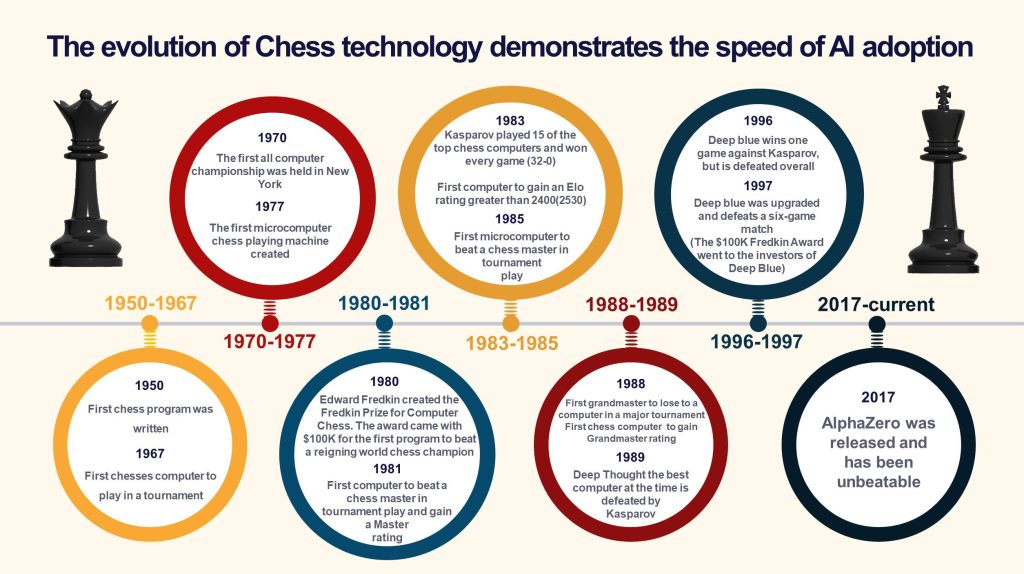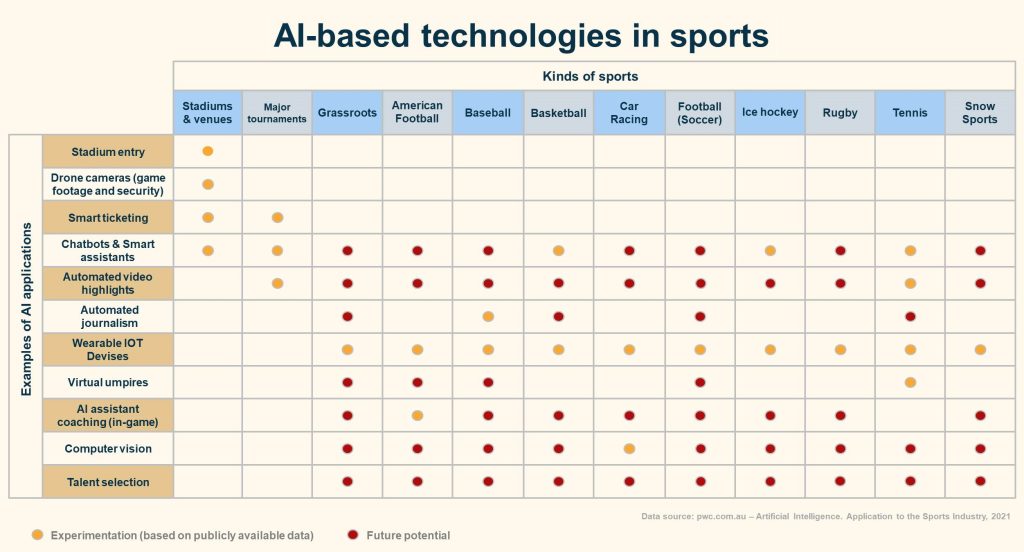Sports multiplied by technology equal a new level of accuracy, professionalism, and fan engagement. With the advent of artificial intelligence (AI) and other clever technologies, we witness improvement in all aspects of sports. Machines assist humans all the way from talent acquisition and training to the analysis of team and individual performance, which, byF the way, increased by 28% and 17%, respectively, thanks to AI. In this post, we will take a peek at how and when artificial intelligence in the sports industry started and look at the most game-changing uses of AI that push the envelope of sports today.
How does AI impact modern sports?
AI in sports embraces a vast number of able-to-learn technologies that can receive tons of information, analyze it, and develop an effective response without having humans come and help. The iconic, based-on-true-events movie Moneyball is a perfect example of how data analytics and sabermetrics (in-game activity statistics) can help achieve fantastic team performance. However, it is hardly the first use of AI technologies in sports.
The AI’s modest entry into sports happened back in 1950 when the first chess program was written. Since then, AI needed 47 years of learning to beat the chess grandmaster Garry Kasparov and 67 years of polishing its chess mastery to become unbeatable (AlphaZero release, 2017). By the way, it took AlphaZero only four hours of self-training to play millions of chess games and achieve the master level. This application is now used for training beginners and champions alike.

Today, artificial intelligence in sports has evolved by huge leaps, improving sports experiences with smart technologies like computer vision, video-assistant referee (VAR), virtual-reality simulators, goal-line technology, and machine learning algorithms for AI sports predictions, to name a few.
What kinds of sports use AI the most?
Although artificial intelligence in sports is presented in literally every major sports discipline, barely all of them use it to the fullest extent, as shown in this diagram by PwC:

Football (soccer), baseball, cricket, basketball, and tennis are the most active in terms of adopting AI, with sports analytics being the most sought-after kind of technology.
The following diagram shows how analytics is being incorporated across different sports.

Artificial intelligence technologies in sports
Here are some of the most tremendous technologies the bond of artificial intelligence and sport could ever create:
- Chatbots are used by NHL, NBA teams, and Wimbledon to create unparalleled fan engagement by responding to fan inquiries about key players, team statistics, hotspots, tickets, real-time game data, etc.
- Computer vision apps help trained neural networks to capture and interpret information inside videos and images, for example, to detect athletes’ poses or identify sports cars in real-time during the race.
- Wearables (the most spread application of AI in sports so far) include watches and data tracking devices such as heart rate monitors that collect data on athletes’ physical condition and exertion level to help optimize training and avoid injuries.
- Goal Line Technology in football signals a referee when a ball crosses the goal line entirely, helping him make fast and informed decisions during the game.
- Video Assistant Referees and Decision Review systems in soccer, tennis, and cricket provide a referee with slow-motion video replay and enable him to detect violations accurately and without slowing down the match.
- Automated journalism apps are natural language processing technologies that automatically process sports stats and data and turn them into short sports news summaries, helping journalists cover more sports events.
- Video highlights technologies (such as IBM Watson in Wimbledon) use machine learning and AI in sports video creation to determine and zoom in on the most exciting in-game moments by analyzing ball movement, fan reaction, and other real-time data.
Artificial Intelligence in sports predictions
Artificial intelligence sports predictions technologies give team managers, coaches, and bettors a competitive edge in forecasting game results or individual/team performance by leveraging machine intelligence in processing tons of stats and metrics a human would never be able to embrace. Here are the examples of how AI can become a true game-changer in sports:
- Scouting apps help improve talent selection and eliminate bias in recruitment by using physical metrics and historical performance data to predict an athlete’s future potential.
- Artificial intelligence in sports prediction can be used for creating sports betting apps that leverage ML algorithms to get valuable insights from historical data, previous stats, locations, weather, and player/team previous performance.
- ML-driven matches prediction apps can foresee match results by analyzing on-field activity data captured by computer vision devices.
- AI predictions on sports also include injury prediction applications that help trainers create optimal individual training programs to keep players fit and safe.
AI in sports coaching
Today, artificial intelligence in sports isn’t something optional teams can use or not. It is rather the new norm, and the most ground-breaking way it changes professional sports is the individual performance assessment.
Coaches are interested not only in their team’s/athlete’s impeccable health and performance but also invaluable insights about the competitors’ strong and weak points. With the use of Artificial intelligence in sports, coaches can now know the ropes like never before. ML-driven technologies help them learn from enormous portions of sports data (including that obtained from wearable tech and computer vision). This knowledge can be used to develop optimal, personalized training programs, map out success, and build a winning game strategy.
How much money is in the AI sports industry now?
The global AI sports market is growing apace, promising to reach $3.3 billion by 2026 with a CAGR of approximately 33%. North America is going to remain the largest market, being chased by the fast-growing Asia-Pacific region.

Sports analytics remains the fast-developing segment of Artificial intelligence in the sports industry, with a current market value of $889,4 million and the perspective to reach over $3 billion of revenue by 2028.
Conclusion
The AI and sports industry go hand-in-hand, learning from each other and taking excellence to new heights. Sports coaching, predictions, and fan engagement are the niches that benefit from deep artificial intelligence insights the most.
We at ABNK are constantly working towards integrating AI and ML into suitable projects and advancing the use of these technologies in the sports industry.





